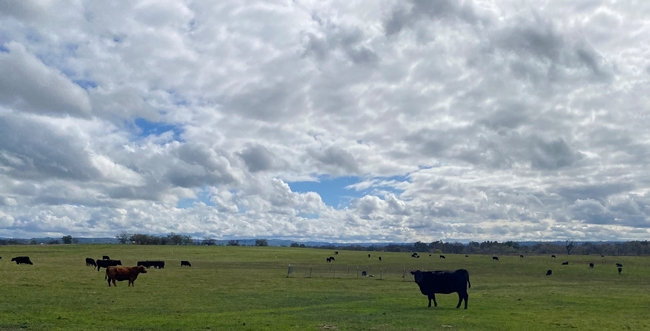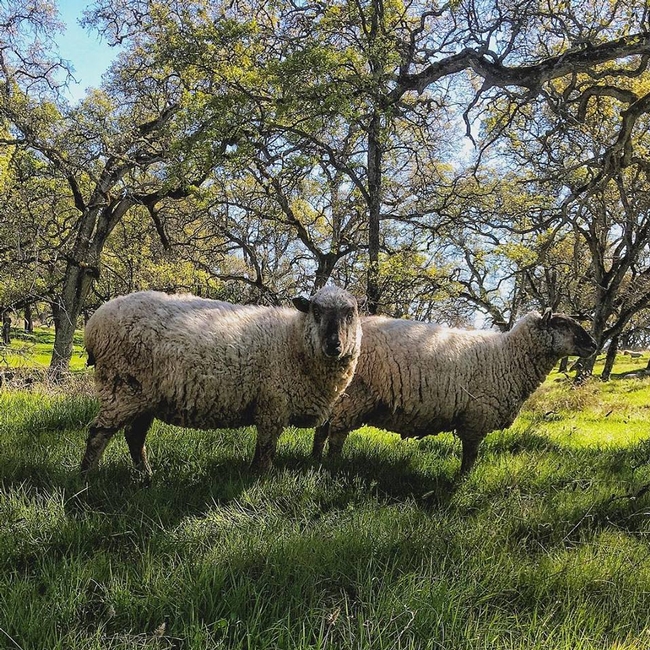- Author: Dan Macon
Looking back at more than 20 years of precipitation data I've collected since my family moved to Auburn, I can't say that we've ever had an “average” year – that is, we've never had exactly 32.68 inches of rain. Some years, like 2016-17, we measure quite a bit more than average (62.96 inches, to be exact); other years, like 2020-21, we measure less (just 19 inches). Since I started keeping track in 2003, we've had 12 years with less than our average, and 6 years with more than average (the balance – 3 years – have been close to what I would call "normal"). Since 2007, we've experienced several 2-4 year stretches of below average rainfall – including the memorable droughts of 2012-2015 and 2020-2022. Interestingly, though, the trendline on my data suggests that our “average” precipitation has increased slightly since I started keeping track in 2003.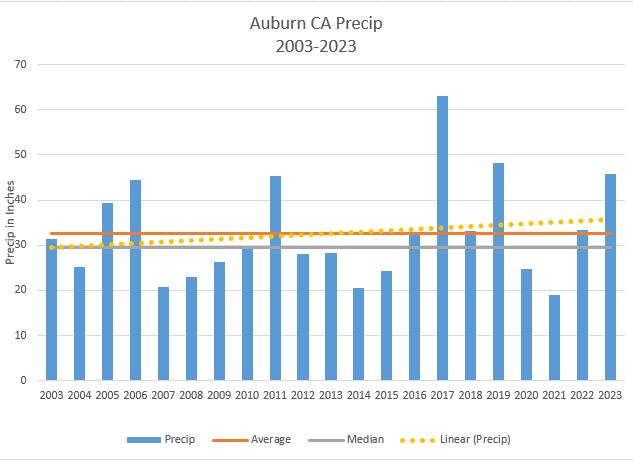
But as anyone who manages livestock on our annual rangelands will tell you, the amount of rainfall we receive is only part of the story when it comes to grass growth – timing and temperature (both soil and air temperature) are key drivers in rangeland forage production. The last two years have provided a stark example!
Think back to mid-March 2022. After an exceptionally wet start to the water year (in October 2021, I measured more than 10 inches of rain), our rangeland forages got off to a great start – they'd germinated in late October and had grown through early December. But in January 2022, the faucet shut off – we received less than 2.5 inches from January 1 through March 31. By some accounts, it was the driest January-March on record. I recall checking soil moisture on the rangelands where our sheep were grazing in mid-March 2022, and finding that we had less than 25% moisture – more like May conditions in the root zone of our rangeland plants.
Despite these dry conditions, however, the UC Sierra Foothill Research and Education Center (SFREC) measured 1,412 pounds of forage per acre on March 1, 2022 (187% of “average” for the date). Rain returned in April 2022, and total forage production at SFREC ended up being 122% of the long term average (just over 3,800 pounds per acre).
In the autumn of 2022, our germinating rain came nearly a month later than the year before – which meant the rangeland forage didn't have much time to grow before the short days and cold temperatures of December forced it into dormancy. A wet and cold December was followed by a wetter (if somewhat warmer) January 2023. While February was slightly drier than “average,” March turned wet and cold again. As of this writing (March 29), we've measured exactly 28 inches of rain at our home place in Auburn since New Year's Day!
Even with all of this moisture, however, forage production at SFREC is lagging significantly behind last year. On March 1, SFREC measured just 619 pounds per acre (less than the long term average for that date of 750 pounds - and less than half of what we had a year ago at this time). As you might expect, soil temperatures followed the cooler air temperatures in late February; cold soils mean little or no forage growth.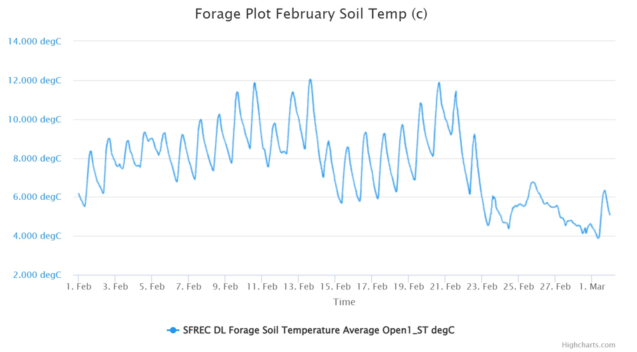
Stated another way, we were in a precipitation drought on this date last year – and we had more forage than “average.” This year is shaping up to be one of the wetter years since I've worked in the foothills – and we're short on feed at the moment (a grass drought). With long days and warmer temperatures coming, I suspect the forage will explode in April, but for now, feed conditions in the foothills are tight!
So how do we manage through this kind of uncertainty? As ranchers, how can we set our stocking rates and production calendars given these wide swings in conditions? During our Working Rangelands Wednesdays webinar series last year, Dr. Leslie Roche (our Cooperative Extension Specialist in Rangeland Management) suggested that while the total amount and seasonable distribution of precipitation are the biggest drivers for annual forage production, specific timing is also critical. November and April precipitation are especially important, based on Dr. Roche's analysis. A statewide collaborative effort is ground-truthing remote sensing technology that will hopefully provide real-time forage production data without needing an army of range technicians clipping plots on a weekly basis.
All of this information will help ranchers make decisions about seasonal and annual adjustments to our stocking rates, but good management will always require careful planning and on-the-fly adjustment to the current year's conditions. While While my colleague Grace Woodmansee (Siskiyou County Livestock and Natural Resources Advisor) developed our Drought Decision Support Tool with drought in mind, I'm realizing there's value in putting together a 12-month forage plan regardless of the conditions! There's no such thing as an average year!
- Author: Dan Macon
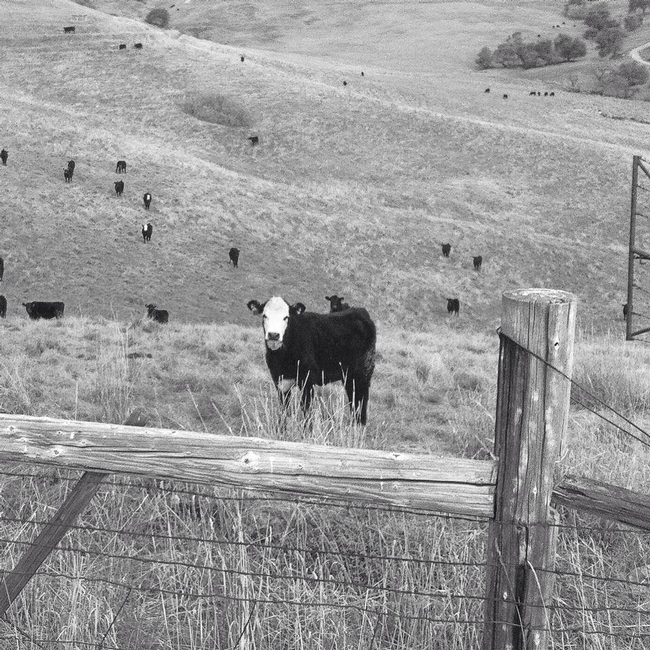
Researchers at the UC Sierra Foothill Research and Extension Center (SFREC) in Browns Valley have been collecting rangeland forage production data since 1979. As a rangeland geek, grazier, and now livestock farm advisor, I find it fascinating to look back at the tremendous variability in forage growth over the last 39 years - partly, I suppose, to help predict the short-term future (in other words, this year's spring growth). From a practical standpoint, I find this dataset helpful for grazing planning purposes, as well.
Since the beginning, SFREC staff has noted germination dates for each year. Since the mid 1990s, the staff has also measured total available rangeland forage on the first day of the month from December through peak standing crop (which generally occurs sometime in May or early June). The average germination date over that time is October 21 - although germination has occurred as early as September 2 (in 2000) and as late as December 12 (in 2002). Interestingly, total production was right at average in 2000-2001, while the much later germination year (2002-2003) produced 145% of normal forage. Timing of precipitation after germination seems to be a critical factor!
As I said at the outset, annual rangeland forage production is incredibly variable. Total production over the last 39 years has ranged from 1,071 pounds of dry matter per acre in 1987-88 to 4,696 pounds per acre in 1992-93. Monthly production is also all over the board - on February 1, 2014, the crew measured just 98 pounds of dry matter per acre (average for the date is 533 pounds). I remember that February well - my family and I sold about a third of our commercial ewes because we simply didn't have enough grass.
Forage production on annual rangeland, obviously, is tied to precipitation. The relationship, however, is complex. Total precipitation is probably not as important as the timing. Air and soil temperatures are also related to grass growth, as this year's numbers clearly demonstrate. Here in Auburn (and I suspect in Browns Valley), our seasonal rainfall has been up and down. We had good rains in November, a relatively dry and warm December, a wet and warm January, and through this week, a dry February. As of today, our precipitation is about 80 percent of normal for our part of the foothills. This year's February 1 forage production at SFREC was a whopping 957 pounds of dry matter per acre - nearly 180 percent of normal for the date. And to think that back in late December I was worried about having enough grass this spring!
The timing of moisture also impacts the date at which we reach peak standing crop. With the dry weather and north wind we've had up until this week, I wondered if our annual grasses would mature earlier than normal. Antecdotally, some of the lower elevation ranchers I've spoken with in the last several weeks reported that the grasses on their shallower soils were starting to show signs of heading out. And talking to friends who ranch in other parts of the state (especially the Central and South Coasts and the San Joaquin Valley), the grass in our Sierra foothills is the exception rather than the rule this year. Some parts of the state do not have any green forage at all.
So what can we do with these numbers from a practical standpoint? I use the monthly numbers for planning purposes - a dry, cold autumn followed by a dry December and January means we'll be tight on forage in February (like 2013-14). Conversely, adequate moisture and warmer-than-usual temperatures (like last year and, at least in our region, this year) means extra forage in February. I also use the peak standing crop information to plan for summer and fall grazing. If we know how much we've grown, we can ration out our dry forage and make sure we leave enough residual to protect the soil when the rains start again in the fall.
Experienced ranchers, obviously, know the difference between a good grass year and a poor one. The data collected at SFREC helps put numbers to this variation - numbers that can help all of us become better managers!


